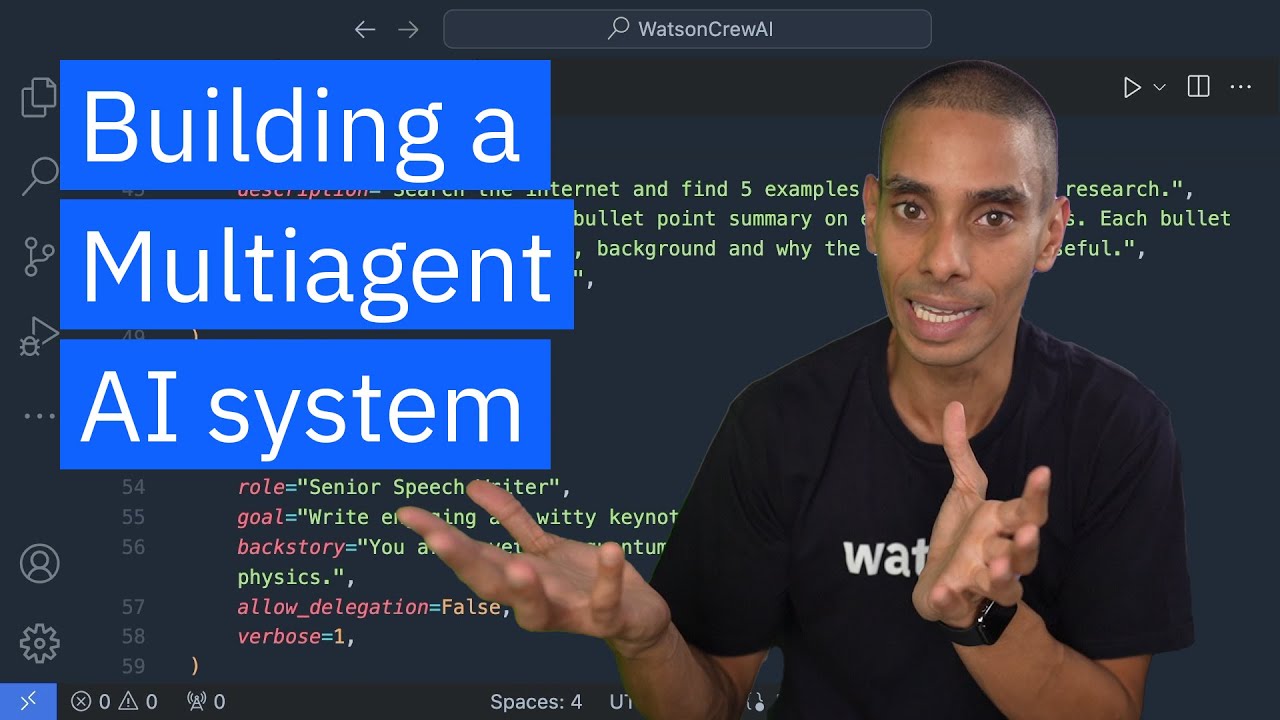The video demonstrates how to build a multi-agent AI system using watsonx.ai and the crewAI framework, highlighting a three-step process to create specialized agents that can automate tasks in just 15 minutes. The presenter successfully sets up a researcher agent to gather AI research in quantum computing and a speech writer agent to create a keynote speech based on the findings, showcasing the effective collaboration between the agents.
In the video, the presenter demonstrates how to build a multi-agent AI system using watsonx.ai and the crewAI framework. The concept of multi-agent systems is introduced, highlighting how they can enhance the capabilities of vanilla large language models (LLMs) by enabling reasoning and task completion. The presenter outlines a three-step process to create a team of specialized agents that can automate tasks, emphasizing that the entire setup can be completed in just 15 minutes.
The first step involves importing necessary dependencies, including crewAI for multi-agent systems and tools from crewAI_tools, such as the Serper Dev Tool for internet access. The presenter also sets up the environment by configuring API keys for watsonx and the Serper tool. After importing the required libraries, the presenter creates the first LLM instance using the watsonx LLM class, specifying parameters like model ID, URL, and project ID. The initial test of the LLM is successful, demonstrating its ability to respond to prompts.
Next, the presenter creates a second LLM designed for function calling, utilizing the IBM dash mistal AI model. With both LLMs established, the presenter proceeds to create the first agent, which is designated as a researcher. This agent is equipped with specific roles, goals, and backstories, allowing it to perform tasks effectively. The agent is also given access to the internet through the Serper tool, enabling it to gather information for its assigned tasks.
The presenter then defines a task for the researcher agent, which involves searching for promising AI research in quantum computing. After setting up the task parameters, the crewAI framework is employed to manage the agent and task execution. The researcher agent successfully completes its task by querying the internet and generating a summary of relevant research findings, which is then saved to a text file.
Finally, the presenter introduces a second agent, a senior speech writer, to create a keynote speech based on the research findings. The speech writer agent is configured with its own role, goal, and backstory, and a new task is defined for it to write an engaging keynote speech. After resolving a minor bug, the multi-agent system successfully transitions from the researcher to the speech writer, resulting in the generation of both a bullet-point summary of research and a complete keynote speech. The presenter concludes by inviting viewers to explore the GitHub repository for the code and outputs generated during the demonstration. Want to play with the technology yourself? Explore our interactive demo → watsonx.ai Interactive Demo
WatsonxCrewAI Github → GitHub - nicknochnack/WatsonxCrewAI: Build a keynote writing agent using CrewAI and watsonx.ai.
